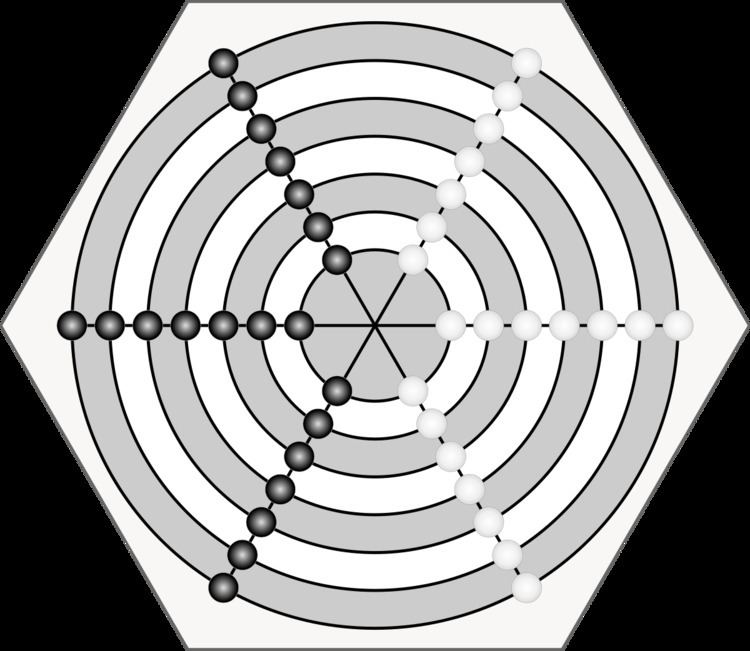 | ||
Gol-skuish is a two-player abstract strategy game from India, specifically from Central Provinces. The game belongs to the draughts and Alquerque family as pieces are captured by leaping over them. The board is composed of seven concentric circles divided by three diametrical lines. Gol-skuish belongs to a specific category of games called Indian War-games which include Lau kata kati, Dash-guti, Egara-guti, and Pretwa. At the beginning of every Indian War-game all the pieces are laid out on the board at every intersection point, with the exception of the central point. This forces the first move of the game to be played on the central point, and captured by the second player's piece.
Contents
Gol-skuish is a larger version of the game Pretwa.
Setup
The board consist of seven concentric circles divided by three diametrical lines which are 60 degrees apart (see diagram). This produces 43 intersection points (here-in-forth called "points"). The three diametrical lines intersect to form the central point of the board. Pieces are situated on the points, and move and capture along the lines of the board.
Each player has 21 pieces. One plays the black pieces, and the other plays the white pieces, however any two colors or distinguishable objects will do. Players choose which color to play, and who starts first.
As indicated by the diagram, each player places their 21 pieces initially on their "half of the board" and the central point is left vacant.
Rules
Related Games
Pretwa, Lau kata kati, Dash-guti, Egara-guti, Butterfly (game), Draughts, Alquerque
